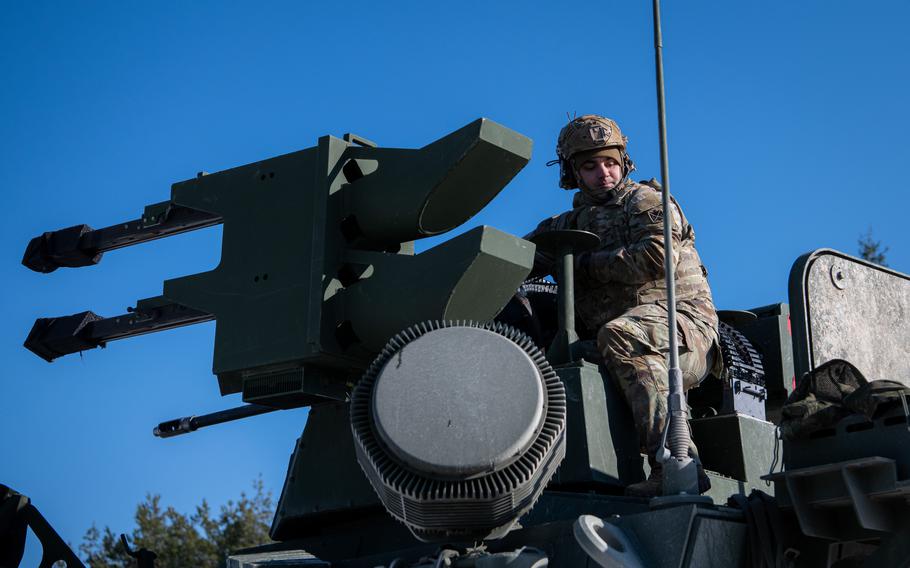
Army Staff Sgt. Cody Reichard trains on the maneuver short-range air defense, or M-SHORAD, system at Grafenwoehr Training Area, Germany, on Feb. 9, 2023. The Army’s push to develop and field modernized air and missile defenses may be slowed by the service’s approach to design and testing of new systems, the Government Accountability Office said in a report June 17, 2025. (Phillip Walter Wellman/Stars and Stripes)
Army efforts to protect soldiers, equipment and installations in the face of Russian and Chinese weapons advancements are running up against the service’s overreliance on old-school tools, Congress’ watchdog agency said.
A Government Accountability Office report released Tuesday urges the Army to start consistently following leading practices in the push to design air and missile defenses capable of countering near-peer adversaries.
“The Army may be missing opportunities for quicker delivery of capabilities if it does not ... adopt modern design tools across its air and missile defense modernization efforts,” the GAO said.
The report notes seven major projects — including short-range air defense systems, directed-energy weapons and counter-drone technologies — that the Army has undertaken since 2017. Funding requests for these programs rose from $8.8 billion to $11.8 billion between 2021 and 2025, the GAO said.
However, most of those seven are still in development, and only one — the Sgt. Stout, a maneuverable short-range air defense system — has reached soldiers in the field, according to the report.
Another, the Integrated Battle Command System, has reached the testing stage with operational users, the GAO said.
“Other air and missile defense systems will not be fielded to operational units for years to come,” the report said.
The Army’s use of 3D modeling and simulation misses out on more modern design methods and could account for the slow pace of development, according to the report.
In 3D modeling and simulation, a static representation of a product is tested with predefined data to understand how it will function in a specific situation.
In contrast, leading companies use tools such as digital twins and digital threads, the GAO found. Digital twins are virtual models that mirror systems in real time, while digital threads allow seamless data sharing across a system’s life cycle.
Adopting those practices could help engineers of air and missile defense systems catch design flaws earlier, reduce costs and improve coordination, the GAO said.
The audit was mandated in the 2024 defense spending bill, which directed the GAO to evaluate how the Army is applying modern development strategies to its air and missile defense efforts.
The Defense Department agreed with all six of the report’s recommendations, which include incorporation of more iterative design processes and assessment of the costs and benefits of using digital twins and digital threads.